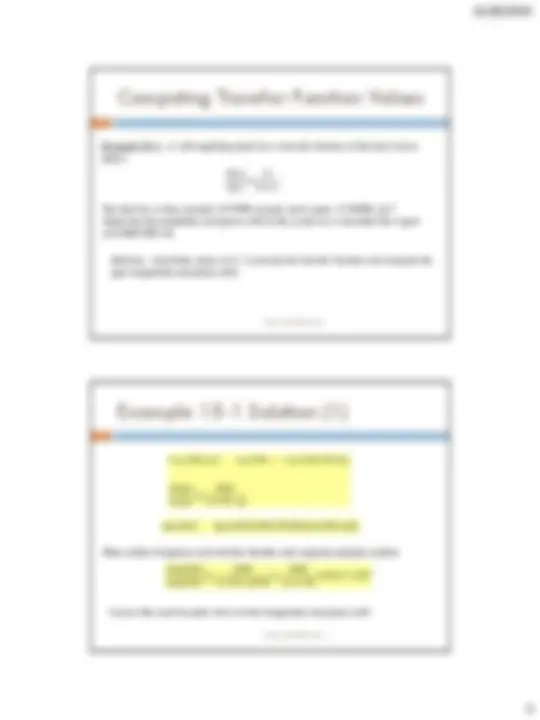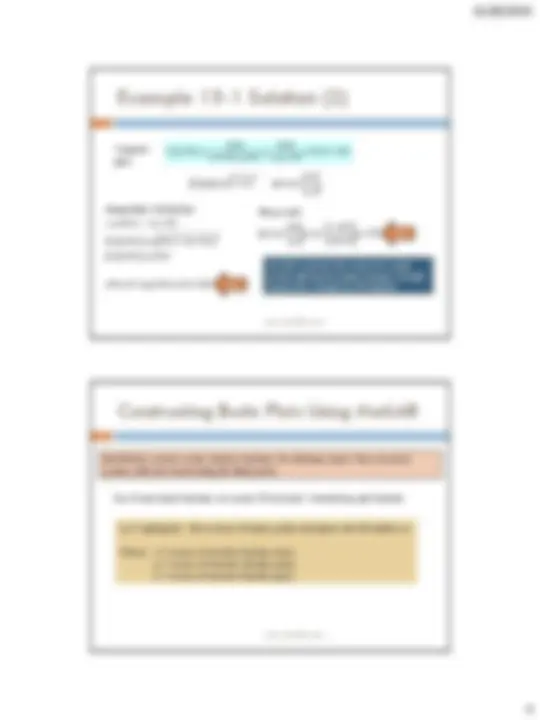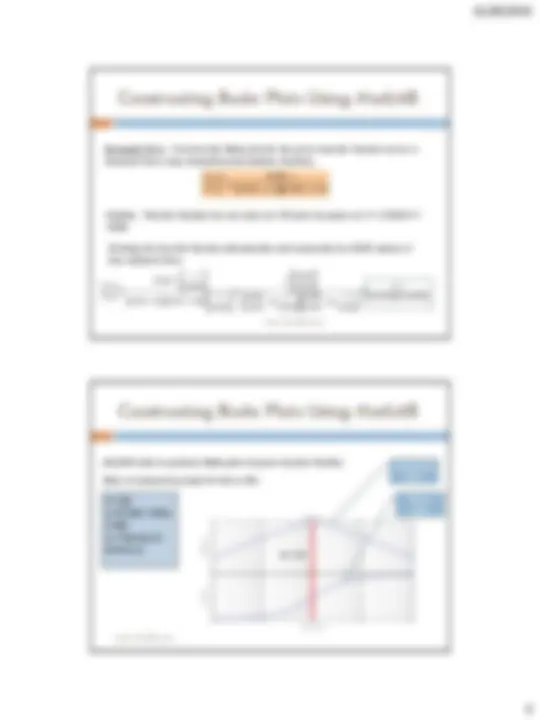





Study with the several resources on Docsity

Earn points by helping other students or get them with a premium plan


Prepare for your exams
Study with the several resources on Docsity

Earn points to download
Earn points by helping other students or get them with a premium plan
Community
Ask the community for help and clear up your study doubts
Discover the best universities in your country according to Docsity users
Free resources
Download our free guides on studying techniques, anxiety management strategies, and thesis advice from Docsity tutors
A detailed explanation of Bode plots, their construction, and calculation methods for transfer functions. Students of ET 438a Automatic Control Systems Technology will learn how to compute magnitude and phase shift, create Bode plots using MatLAB, and understand the significance of these plots in control systems. examples, solutions, and step-by-step instructions.
Typology: Study notes
1 / 7

This page cannot be seen from the preview
Don't miss anything!




lesson15et438a.pptx 1
lesson15et438a.pptx
2
lesson15et438a.pptx
3
Bode plots consist of two individual graphs: a) a semilog plot of gain vs frequency b) a semilog plot of phase shift vs frequency. Frequency is the logarithmic axis on both plots.
Bode plots of transfer functions give the frequency response of a control system
To compute the points for a Bode Plot:
lesson15et438a.pptx
4
Bode plot calculations- magnitude/phase
Gain: dB 20 log(G(j ))
X(j) G(j ) Y(j) w
w w w
Transfer Function
X(jw) Y(jw)
i
o x
y
X
Y
Where for a given frequency Phase: o i
To find the magnitude and phase shift of a complex number in rectangular form
lesson15et438a.pptx
7
Complex G (j 0. 001 ) 1 15902000 j 0. 001 1 ^2000 j 1. 590 566. 9 j 901 gain
w a G(j ) a^2 b^2 tan-^1 b
dB 20 log( 1065 ) 60. 5 dB
G(j 0 .001) 1065
G(j 0 .001) 566. 9 901
a 566. 9 b - 2 2
Magnitude Calculation (^) Phase shift
58
Ans
Ans
At 0.001 rad/sec, the system has a gain of 60.5 dB and the output changes in height lag the flow changes by 58 degrees
lesson15et438a.pptx
8
MatLAB has control system toolbox functions for defining Linear Time-invariant systems (LTI) and constructing the Bode plots.
Use tf and bode functions to create LTI and plot. Introducing zpk function
sys = zpk(z,p,k) Turns arrays of zeros, poles and gains into LTI called sys
Where z = array of transfer function zeros p = array of transfer function poles k = array of transfer function gains
Constructing Bode Plots Using MatLAB
lesson15et438a.pptx
9
Example 15-2: Construct the Bode plot for the given transfer function shown in factored form using MatLAB control toolbox functions.
0. 001 s 1 0. 001 s 1
V(s) i
o
Solution: Transfer function has one zero at s=0 and two poles at s=-1/0.001=- 1000 Dividing the transfer function denominator and numerator by 0.001 places it into standard form
^ s^1000 s^1000
5 s
001 s^1
001
001
001 s^1
001
001
001 s^0.^005
001
001 s 10. 001 s 1 1
001
005 s^1 V(s)
V(s) i
o ^ ^
Constructing Bode Plots Using MatLAB
lesson15et438a.pptx
10
MatLAB code to produce Bode plot of given transfer function Enter at command prompt of into m-file k= [5] p=[1000 1000] z=[0] sys=zpk(z,p,k) bode(sys)
Magnitude (dB)
-270 101 102 103 104 105
Phase (deg)
Bode Diagram
Frequency (rad/s)
Magnitude plot
Phase plot
w=
End Lesson 15: Bode Plots of
Transfer Functions
ET 438a Automatic Control Systems Technology
lesson15et438a.pptx